 (Beyond Pesticides, June 29, 2020) Bayer’s Monsanto is requesting non-regulated status for corn that will increase the use of drift-prone and toxic herbicides. This means that the planting of a new genetically engineered (GE) variety of corn, which requires substantial weed killer use, will not be restricted in any way. The syndrome of ‘more-corn, more-pesticides, more-poisoning, more-contamination’ must stopâas we effect an urgent systemic transformation to productive and profitable organic production practices. Because USDA is proposing to allow a new herbicide-dependent crop under the Plant Protection Act, the agency must, but does not, consider the adverse impacts associated with the production practices on other plants and the effects on the soil in which they are grown. Business as usual is not an option for a livable future.
(Beyond Pesticides, June 29, 2020) Bayer’s Monsanto is requesting non-regulated status for corn that will increase the use of drift-prone and toxic herbicides. This means that the planting of a new genetically engineered (GE) variety of corn, which requires substantial weed killer use, will not be restricted in any way. The syndrome of ‘more-corn, more-pesticides, more-poisoning, more-contamination’ must stopâas we effect an urgent systemic transformation to productive and profitable organic production practices. Because USDA is proposing to allow a new herbicide-dependent crop under the Plant Protection Act, the agency must, but does not, consider the adverse impacts associated with the production practices on other plants and the effects on the soil in which they are grown. Business as usual is not an option for a livable future.
Sign the petition. Tell USDA we don’t need more use of 2,4-D, Dicamba, and other toxic herbicides associated with the planting of new GE corn.
Bayer-Monsanto has developed multi-herbicide tolerant MON 87429 maize, which is tolerant to the herbicides 2,4-D, dicamba, glyphosate, glufosinate, and aryloxyphenoxypropionate (AOPP) acetyl coenzyme A carboxylase (ACCase) inhibitors (so-called âFOPâ herbicides, such as quizalofop). Now the company wants this corn to be deregulatedâallowing it to be planted and the herbicides use without any restrictions. The petition below, and our formal comments explain the dangers in greater detail.Â
2,4-D is a phenoxy herbicide that is as well known for its propensity to drift as it is for its damaging health and environmental effects. Approval of Bayer-Monsanto’s application would result in adverse impacts and contamination, along with the demonstrated plant-damaging effects. Over the decades of its use, 2,4-D has been linked to an increased risk of birth defects, reduced sperm counts, increased risk of non Hodgkin lymphoma, Parkinson’s disease, and hormone disruption, as well as other health problems. Â
2,4-D drift has long been a known problem to off-site locations, endangered species, and non-target crops. Many forms of 2,4-D volatilize above 85oF and 2,4-D drift has been known to damage tomatoes, grapes, and other plants. Herbicide concentrations 100 times below the recommended label rate have been reported to cause injury to grapes.
Dicamba is a selective benzoic acid herbicide similar in structure and mode of action to phenoxy herbicides like 2,4-D. We have concerns that increased use of dicamba will lead to elevated human and environmental exposures, and especially via contamination of waterways. Concerns about dicamba drift have already proved to be valid. First registered in the late 1960s, dicamba has been linked to cancer, reproductive effects, neurotoxicity, birth defects, and kidney and liver damage. It is also toxic to birds, fish and other aquatic organisms, and known to leach into waterways after an application. It is a notoriously drift-prone herbicide. Studies and court filings show dicamba able to drift well over a mile off-site after an application.
Glyphosate is a broad spectrum, post-emergent, non-selective systemic herbicide used on non-cropland, as well as a variety of crops. It has seen the largest use in crops that are genetically engineered to be tolerant to it, where it can kill most grassy and broadleaved plants. Glyphosate products, such as Monsanto’s Roundup, are formulated with surfactants and other ingredients to increase its effectiveness as a weed killer.
Reviews of glyphosate and glyphosate-based herbicides demonstrate a growing scientific consensus and concern about their health, environmental, and social impacts. A group of well-known and respected scientists collaborated on a consensus âStatement of Concernâ stating that glyphosate is more persistent in the environment than previously believed and that evidence has accumulated over the past two decades, showing that glyphosate-based herbicides have serious impacts on human health and the environment, the extent of which has yet to be fully determined. Epidemiological studiesâin which exposure is to formulated products rather than the technical grade active ingredient glyphosateâhave found a positive association between exposure to glyphosate-based herbicides and cancer.
On March 20, 2015, the  International Agency for Research on Cancer (IARC) announced that it had classified glyphosate as a class 2A carcinogen, as âprobably carcinogenic to humans.â This category is the most definitive of any based on standard laboratory animal testing. An April 2019 report by the Agency for Toxic Substances and Disease Registry (ATSDR) â an agency of U.S. Department of Health and Human Services â documented evidence of findings that support glyphosate’s carcinogenicity.
Glyphosate is also an antibiotic and, as such, has negative impacts on the human gut biota. The imbalance (dysbiosis) of bacteria in the gut has been associated with many modern diseases. Use of antibiotics, like glyphosate, in agriculture allows residues of antibiotics and antibiotic-resistant bacteria to emerge on agricultural lands, move through the environment, contaminate waterways, and ultimately reach consumers in food. Both the human gut and contaminated waterways provide incubators for antibiotic resistance.Â
The Northwest Center for Alternatives to Pesticides summarizes the effects of glufosinate:
Glufosinate is a broad-spectrum herbicide that kills plants by inhibiting the enzyme glutamine synthetase, an enzyme also found in animals, including humans. Glufosinate chemically resembles glutamine, a molecule used to transmit nerve impulses in the brain. Neurotoxic symptoms observed in laboratory animals following ingestion, dermal exposure, or inhalation of glufosinate include convulsions, diarrhea, aggressiveness, and disequilibrium. Dogs appear to be the laboratory animal most sensitive to glufosinate. Ingestion of glufosinate for two weeks caused heart and circulatory failure resulting in death. Exposure of pregnant laboratory animals to glufosinate caused an increase in premature delivery, miscarriages, the number of dead fetuses, and arrested development of fetal kidneys. Concentrations of a glufosinate-containing herbicide of less than one part per million cause mortality of oyster and clam larvae. Several species of disease-causing fungi are resistant to glufosinate, while a beneficial fungus that parasitizes disease-causing fungi is very susceptible to glufosinate. This means that use of glufosinate can have âimportant microbiological consequences.
Quizalofop is a developmental and reproductive toxin and recognized as an endocrine disruptor by the EU. It carries the signal word âDangerâ and requires full protective equipment. The label carries the signal word âDanger,â warning of health and environmental hazards.
Dicamba and 2,4-D vapor drift and subsequent crop injury to sensitive broadleaf crops have been frequent problems. Abnormal leaf growth, floral development, reduced yield, and reduced quality have all been observed from dicamba drift. These impacts have severe economic consequences for non-GE and organic farmers. The burden should not be placed on these farmers to protect themselves from drift with best management practices.Â
The Animal and Plant Health Inspection Services (APHIS) cannot assume that the environmental impacts associated with herbicide drift will be mitigated by the registration requirements established by EPA on pesticide labels. Unfortunately, label directions have been shown to have no effect on decreasing spray drift. In fact, EPA has acknowledged this and has attempted to review and revise pesticide labeling guidance. EPA’s efforts to mitigate against potential risks from drift by requiring buffer zones and application restrictions have proven ineffective.Â
USDA Must Deny Monsanto’s Petition. APHIS has a responsibility under the law, the Plant Protection Act, to prohibit and/or restrict any plant or plant product that poses a risk to the environment. APHIS must fully review the salient impacts of multi-herbicide-tolerant MON 87429 corn, and the expected increase in use of drift-prone and toxic herbicides and reject the petition for deregulation.Â
GE crops are not the solution for glyphosate resistant weeds created by glyphosate-resistant GE crops. Had a proper environmental assessment been conducted by APHIS on previous GE decisions, the economic and environmental threat of resistant, invasive weeds may have been avoided. It is time for the agency to focus on other sustainable, integrated methods for long-term weed management, which allow our nation’s farmers to get off the toxic treadmill.Â
USDA/APHIS must not escalate the American agricultural economy’s broad reliance on herbicides because of the failure of glyphosate GE technologies. Now is the time to concede that GE technologies have not lived up to their promises and encourage our nation’s farmers to return to more sustainable methods of farming.
Sign the petition. Tell USDA we don’t need more use of 2,4-D, Dicamba, and other toxic herbicides associated with the planting of new GE corn.
Thank you!
The Beyond Pesticides Team
PETITIONÂ to USDA
To USDA/APHIS Docket:
The undersigned oppose Monsanto’s petition to deregulate multi-herbicide tolerant MON 87429 maize, which is tolerant to the herbicides 2,4-D, dicamba, glyphosate, glufosinate, and aryloxyphenoxypropionate (AOPP) acetyl coenzyme A carboxylase (ACCase) inhibitors (so called âFOPâ herbicides such as quizalofop). We support the detailed comments submitted by Beyond Pesticides.
2,4-D
2,4-D is a phenoxy herbicide that is as well known for its propensity to drift as it is for its damaging health and environmental effects, which means that potential adverse impacts and contamination from this highly toxic herbicide will also increase, along with the demonstrated plant-damaging effects if the petition is approved. The scientific literature shows the hazards of 2,4-D. Over the decades of its use, 2,4-D has been linked to an increased risk of birth defects, reduced sperm counts, increased risk of non-Hodgkin lymphoma, Parkinson’s disease, and hormone disruption, as well as other health problems.Â
2,4-D drift is a major concern, especially for those who live adjacent to and near agricultural areas. 2,4-D is known to drift into homes, where it can stay in the indoor environment for up to a year, further exposing these communities to 2,4-D. The risk from drift that will occur under a best case and worst-case scenario cannot go ignored.
2,4-D drift has long been a known problem to off-site locations, endangered species, and non-target crops. Many forms of 2,4-D volatilize above 85oF and 2,4-D drift has been known to damage tomatoes, grapes, and other plants. Herbicide concentrations 100 times below the recommended label rate have been reported to cause injury to grapes. Drift can injure plants half a mile or more from the application site. In addition to non-target plants, 2,4-D can impact species listed under the jurisdiction of the Endangered Species Act (ESA). In 2011, the National Marine Fisheries Service (NMFS) identified 2,4-D as likely to jeopardize all listed salmonids, based on current registration and label directions.
Dicamba
Dicamba is a selective benzoic acid herbicide similar in structure and mode of action to phenoxy herbicides like 2,4-D. We have concerns that increased use of dicamba will lead to elevated human and environmental exposures, and especially via contamination of waterways. Concerns about dicamba drift have already proved to be valid. First registered in the late 1960s, dicamba has been linked to cancer, reproductive effects, neurotoxicity, birth defects, and kidney and liver damage. It is also toxic to birds, fish, and other aquatic organisms, and known to leach into waterways after an application. It is a notoriously drift-prone herbicide. Studies and court filings show dicamba able to drift well over a mile off-site after an application.
Bayer’s Monsanto thought it could solve this problem. But we have seen what happened. When it introduced its dicamba-resistant soybeans and cotton, reports of damage began to spring up throughout the U.S. Non-soybean farmers began taking action. Bader Farms, the largest peach farm in Missouri, won a suit against Monsanto, securing compensation for damage and defoliation of its trees after illegal dicamba use. The dicamba scandal pitted farmer against farmer, tearing apart many agricultural communities. As reported by NPR, one Arkansas farmer was killed in a dispute with his neighbor that involved use of dicamba herbicides.
In February 2020, Missouri’s Bader Farms was awarded $265 million in compensation from Monsanto and BASF (another maker of a GE dicamba-based herbicide) for the damage caused to their peach farm. Critically, the jury determined that the joint venture between the two companies amounted to a conspiracy to create an âecological disasterâ in the name of profit. Then in June, a federal court vacated EPA’s 2018 conditional registration of three dicamba weed killer products for use on an estimated 60 million acres of DT (dicamba-tolerant through genetic modification/engineering) soybeans and cotton.
The written court ruling by the Ninth Circuit released in early June clearly spells out the violations of federal pesticide law (Federal Insecticide Fungicide and Rodenticide Act) by EPA in re-approving OTT dicamba under another conditional registration. The court ruling was made on the basis that âEPA substantially understated the risks it acknowledged and failed entirely to acknowledge other risks.â
Among the violations cited by the court are EPA’s understatement of the amount of dicamba tolerant seed planted, whether formal complaints were accurately reported, and its complete refusal to estimate actual damage. Instead of estimating damage in real numbers, the court chastised the agency for referring to dicamba damage as âpotentialâ or âalleged,â an approach that lines up with the gaslighting the chemical industry perpetrated on affected farmers.
The judge also took EPA to task in three areas rarely considered under FIFRA. First, EPA’s failure to acknowledge that the iterative tightening of dicamba’s label language over the years effectively made it âdifficult if not impossible to follow for even conscientious users.â Second, EPA failed to consider the âanti-competitive economic effectsâ of GE dicamba on the non-GE cotton and soybean markets. And lastly, the agency failed to consider how âOTT dicamba use would tear the social fabric of farming communities.â These critical components provide important precedent for future lawsuits challenging egregious abuses under federal pesticide law, requiring USDA to regulate any crop who production system is dependent on dicamba.
Glyphosate
Glyphosate (N-phosphono-methyl glycine) is a broad spectrum, post-emergent, non-selective systemic herbicide used on non-cropland, as well as a variety of crops. It has seen the largest use in crops that are genetically engineered to be tolerant to it, where it can kill most grassy and broadleaved plants. Glyphosate products, such as Bayer-Monsanto’s Roundup™, are formulated with surfactants and other ingredients to increase its effectiveness.Â
The use of glyphosate has been increasing steadily. As a result, glyphosate residues are being detected in tissues and excretions of farm animals, as well as human urine. Bøhn et al. found that glyphosate accumulates in Roundup Ready™ soybeans and also contains a different nutritional profile from organic and non-genetically engineered soybeans.
Reviews of glyphosate and glyphosate-based herbicides demonstrate a growing scientific consensus and concern about their health, environmental, and social impacts. A group of well-known and respected scientists collaborated on a consensus âStatement of Concernâ stating that glyphosate is more persistent in the environment than previously believed and that evidence has accumulated over the past two decades showing that glyphosate-based herbicides have serious impacts on human health and the environment, the extent of which has yet to be fully determined.
Contrary to EPA’s finding of evidence of non-carcinogenicity, epidemiological studiesâin which exposure is to formulated products rather than the technical grade active ingredient glyphosateâhave found a positive association between exposure to glyphosate-based herbicides and cancer. On March 20, 2015, the International Agency for Research on Cancer (IARC) announced that it had classified glyphosate as a class 2A carcinogen, as âprobably carcinogenic to humans.â This category is the most definitive of any based on standard laboratory animal testing. An April 2019 report by the Agency for Toxic Substances and Disease Registry (ATSDR)âan agency of U.S. Department of Health and Human Servicesâdocumented evidence of findings that support glyphosate’s carcinogenicity.
Glyphosate is also an antibiotic and, as such, has negative impacts on the human gut biota. The imbalance (dysbiosis) of bacteria in the gut has been associated with many modern diseases. They include diarrhea, inflammatory bowel disease, activation of HIV infection, allergies, infection by Clostridium difficile and other pathogenic bacteria, autism, liver disease, atherosclerosis, pancreatitis, diabetes, obesity, fibromyalgia, polycystic ovary syndrome, and others. The fact that such diseases are linked to dysbiosis of the gut does not in itself prove that glyphosate causes them. However, the increase in these diseases is correlated tightly with increases in the use of glyphosate. Glyphosate is the most widely used antibiotic in agriculture, and agricultural use of antibiotics dwarfs the use of antibiotics in human medicine.
With the explosion of antibiotic resistance in the U.S. and worldwide, antibiotic use in crop and livestock production is a major public health issue. Use of antibiotics, like glyphosate, in agriculture allows residues of antibiotics and antibiotic-resistant bacteria to emerge on agricultural lands, move through the environment, contaminate waterways, and ultimately reach consumers in food. Both the human gut and contaminated waterways provide incubators for antibiotic resistance.Â
Glufosinate
The Northwest Center for Alternatives to Pesticides summarizes the effects of glufosinate:
Glufosinate is a broad-spectrum herbicide that kills plants by inhibiting the enzyme glutamine synthetase, an enzyme also found in animals, including humans. Glufosinate chemically resembles glutamine, a molecule used to transmit nerve impulses in the brain. Neurotoxic symptoms observed in laboratory animals following ingestion, dermal exposure, or inhalation of glufosinate include convulsions, diarrhea, aggressiveness, and disequilibrium. Dogs appear to be the laboratory animal most sensitive to glufosinate. Ingestion of glufosinate for two weeks caused heart and circulatory failure resulting in death. Exposure of pregnant laboratory animals to glufosinate caused an increase in premature delivery, miscarriages, the number of dead fetuses, and arrested development of fetal kidneys. Concentrations of a glufosinate-containing herbicide of less than one part per million cause mortality of oyster and clam larvae. Several species of disease-causing fungi are resistant to glufosinate, while a beneficial fungi that parasitizes disease-causing fungi is very susceptible to glufosinate. This means that use of glufosinate can have âimportant microbiological consequences.
Quizalofop
Quizalofop is a developmental and reproductive toxin and recognized as an endocrine disruptor by the EU. It carries the signal word âDangerâ and requires full protective equipment. The label warns, âDANGER! Causes irreversible eye damage. Harmful if swallowed, inhaled, or absorbed through the skin. Avoid contact with eyes, skin, or clothing. Avoid breathing vapor or spray mist.â
The label also warns of environmental hazards: âThis pesticide is toxic to fish and invertebrates. Do not apply directly to water, or to areas where surface water is present, or to intertidal areas below the mean high-water mark. . . This product may contaminate water through drift of spray in wind. This product has a potential for runoff for several months or more after application. Poorly drained soils and soils with shallow water tables are more prone to produce runoff that contains this product.â
Volatility and Drift Endanger the Environment
Dicamba and 2,4-D vapor drift and subsequent crop injury to sensitive broadleaf crops have been frequent problems. Abnormal leaf growth, floral development, reduced yield, and reduced quality have all been observed from dicamba drift. These impacts have severe economic consequences for non-GE and organic farmers. The burden should not be placed on these farmers to protect themselves from drift with best management practices that may not even offer adequate protection.
APHIS cannot assume that the environmental impacts associated with herbicide drift will be mitigated by the registration requirements established by EPA on pesticide labels. Unfortunately, label directions have been shown to have no effect on decreasing spray drift. In fact, EPA has acknowledged this and has attempted to review and revise pesticide labeling guidance. EPA’s efforts to mitigate against potential risks from drift by requiring buffer zones and application restrictions have proven ineffective.
USDA Must Deny Monsanto’s Petition
APHIS has a responsibility under the law to prohibit and/or restrict any plant or plant product that poses a risk to the environment. APHIS must fully review the salient impacts of multi-herbicide-tolerant MON 87429 corn, and the expected increase in use of drift-prone and toxic herbicides. We urge the agency to reject the petition for deregulation. To allow new GE material into the environment against the backdrop of documented problems created by other herbicide-tolerant GE crops takes U.S. agriculture in a wrong and hazardous direction and violates the Plant Protection Act. GE gene flow in the environment and increased herbicide dependency have been left unchecked for many years, resulting in an increasing population of resistant weeds and insects that are becoming more and more difficult and costly to control. Additionally, the drift has destroyed habitat for insects that offer farmers ecosystem services that have important economic value.
GE crops are not the solution for glyphosate resistant weeds created by glyphosate-resistant GE crops. Had a proper environmental assessment been conducted by APHIS on previous GE decisions, the economic and environmental threat of resistant, invasive weeds may have been avoided. It is time for the agency to focus on other sustainable, integrated methods for long-term weed management, which allow our nation’s farmers to get off the toxic treadmill.
APHIS must use its full statutory authority and reject the petition to deregulate multi-herbicide-tolerant MON 87429 corn by citing the plant-damaging and invasive-weed propagating risks that have not been fully evaluated by the petitioner when considered alongside the accompanying use of these herbicides. We urge APHIS to consider both the environmental effects and human health effects that this dangerous combination will pose and to deny petitioner’s request for deregulation.
USDA/APHIS must not to escalate the American agricultural economy’s broad reliance on herbicides because of the failure of glyphosate GE technologies. Now is the time to acknowledge that GE technologies have not lived up to their promises and encourage our nation’s farmers to return to more sustainable methods of farming.
Â
 (Beyond Pesticides, July 24, 2020)Â As the novel coronavirus pandemic has heightened awareness of infectious diseases, there is increased attention to connections between environmental concerns and such diseases, including factors that may exacerbate their transmission. New research shows one such relationship: the transmission of schistosomiasis, a tropical disease caused by contact with the larvae of parasitic worms (schistosomes), is likely accelerated by the use of pesticides and other agrochemicals (such as synthetic fertilizers). The study, published in The Lancet Planetary Health, also shows that contamination of freshwater bodies with these chemicals disturbs ecological balances that can actually limit schistosome infections. This new research underscores the urgency of the needed transition, in affected tropical and subtropical areas, to agricultural approaches that do not involve synthetic agrochemicals that pollute local waterways and put peopleâs health at increased risk.
(Beyond Pesticides, July 24, 2020)Â As the novel coronavirus pandemic has heightened awareness of infectious diseases, there is increased attention to connections between environmental concerns and such diseases, including factors that may exacerbate their transmission. New research shows one such relationship: the transmission of schistosomiasis, a tropical disease caused by contact with the larvae of parasitic worms (schistosomes), is likely accelerated by the use of pesticides and other agrochemicals (such as synthetic fertilizers). The study, published in The Lancet Planetary Health, also shows that contamination of freshwater bodies with these chemicals disturbs ecological balances that can actually limit schistosome infections. This new research underscores the urgency of the needed transition, in affected tropical and subtropical areas, to agricultural approaches that do not involve synthetic agrochemicals that pollute local waterways and put peopleâs health at increased risk.








 (Beyond Pesticides, July 23, 2020) Chronic pesticide use, and subsequent exposure, elevate a personâs risk of developing lung cancer, according to a study published inÂ
(Beyond Pesticides, July 23, 2020) Chronic pesticide use, and subsequent exposure, elevate a personâs risk of developing lung cancer, according to a study published in 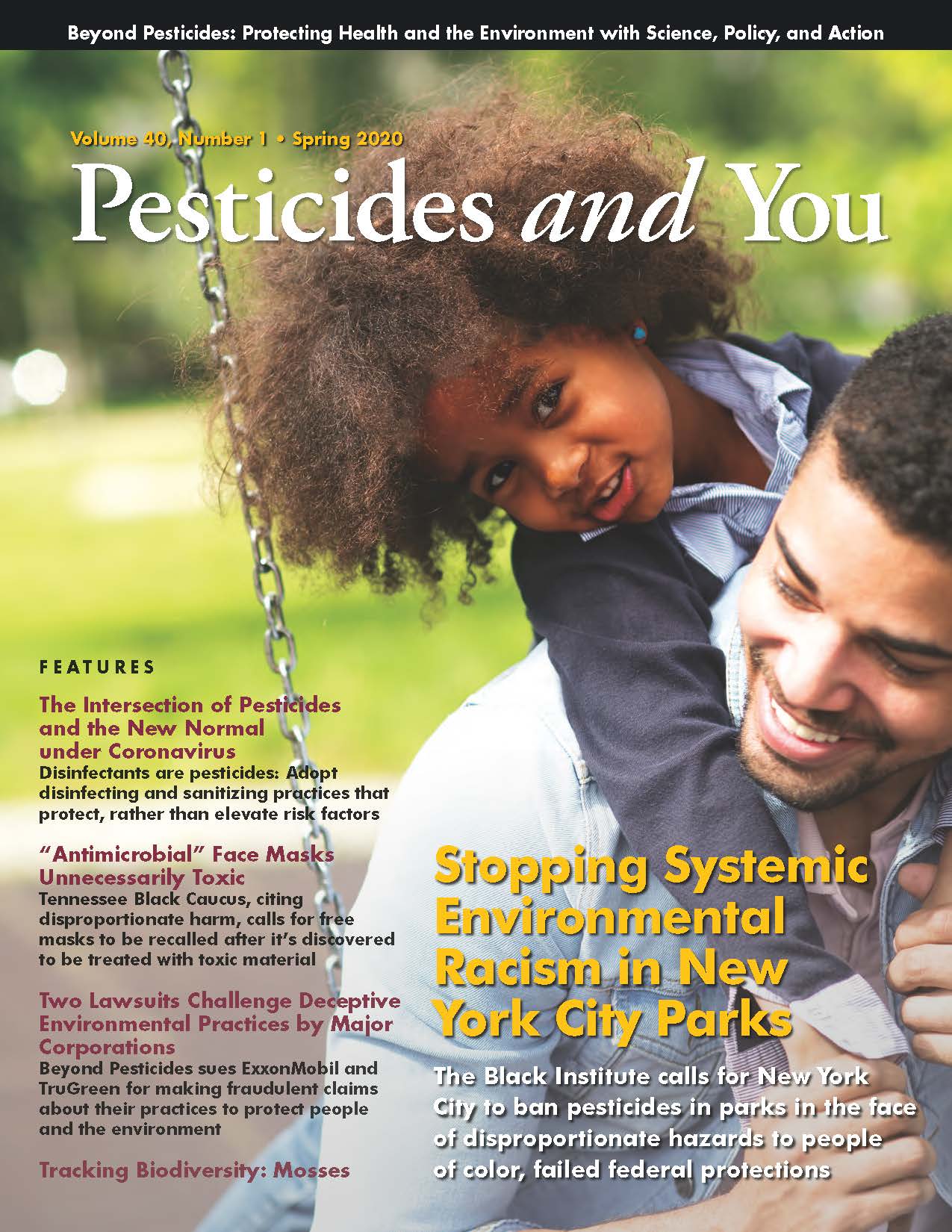 (Beyond Pesticides, June 22, 2020) In the latest issue of
(Beyond Pesticides, June 22, 2020) In the latest issue of  (Beyond Pesticides, July 21, 2020) Climate change and pesticide pollution are known to put coral reef fish at significant risk, but research published in
(Beyond Pesticides, July 21, 2020) Climate change and pesticide pollution are known to put coral reef fish at significant risk, but research published in  (Beyond Pesticides, July 20, 2020) Does your community spray toxic pesticides for mosquitoes? In a well-intentioned but ill-informed attempt to prevent mosquito-borne illness such as West Nile virus, many communities spray insecticides (adulticides) designed to kill flying mosquitoes. If your community is one of these, then your public officials need to know that there is a better, more-effective, way to prevent mosquito breeding.
(Beyond Pesticides, July 20, 2020) Does your community spray toxic pesticides for mosquitoes? In a well-intentioned but ill-informed attempt to prevent mosquito-borne illness such as West Nile virus, many communities spray insecticides (adulticides) designed to kill flying mosquitoes. If your community is one of these, then your public officials need to know that there is a better, more-effective, way to prevent mosquito breeding. (Beyond Pesticides, July 17, 2020)Â
(Beyond Pesticides, July 17, 2020)Â 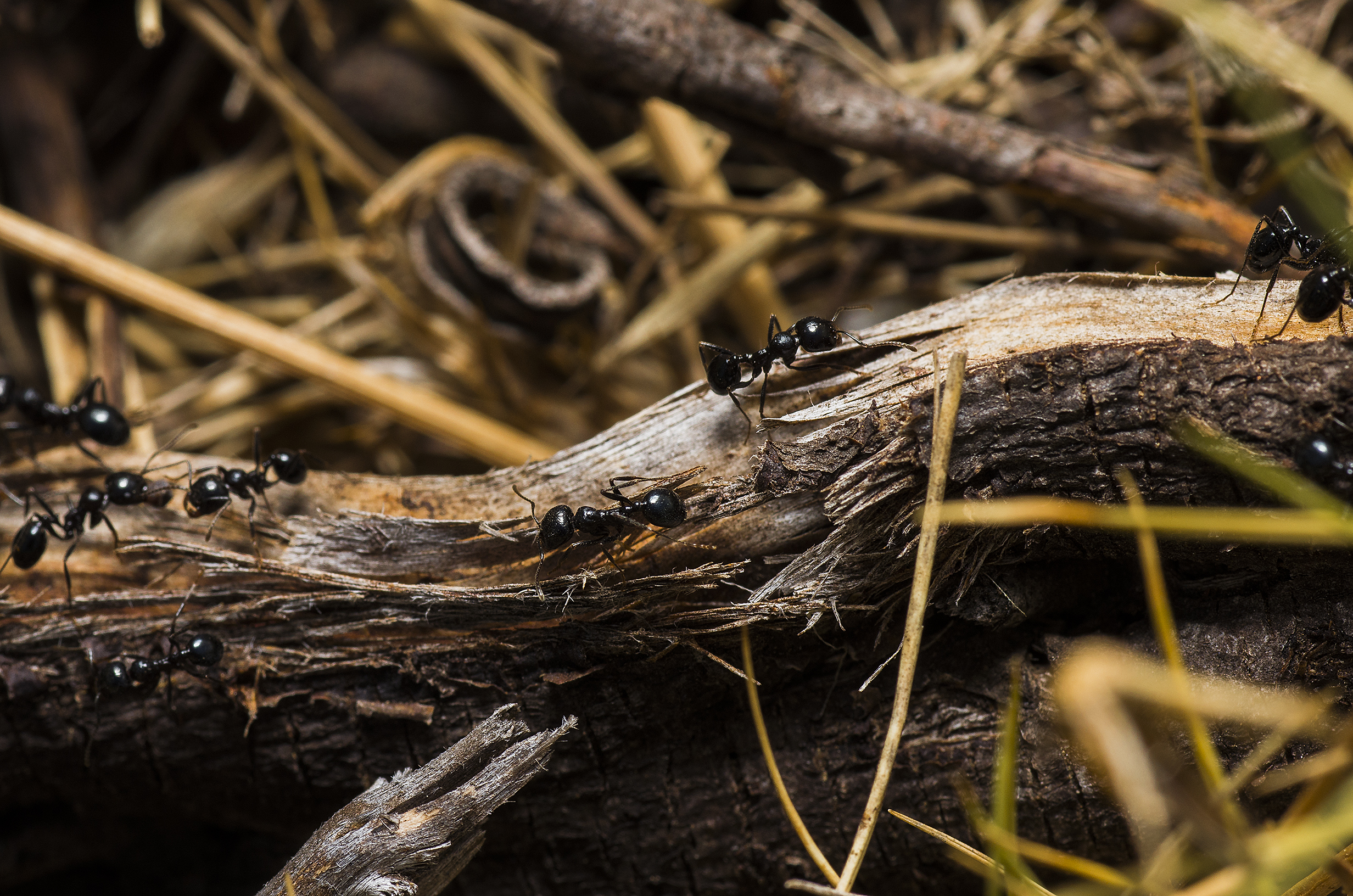 (Beyond Pesticides, July 16, 2020) Long-term exposure to sublethal (low-level) concentrations of the neonicotinoid in soil negatively affects the health and behavioral development of black garden ants (Lasius niger) colonies, according to a study published inÂ
(Beyond Pesticides, July 16, 2020) Long-term exposure to sublethal (low-level) concentrations of the neonicotinoid in soil negatively affects the health and behavioral development of black garden ants (Lasius niger) colonies, according to a study published in  (Beyond Pesticides, July 15, 2020) Evian bottled water is supposed to be so pure that scientists will calibrate their measuring devices with it. But
(Beyond Pesticides, July 15, 2020) Evian bottled water is supposed to be so pure that scientists will calibrate their measuring devices with it. But 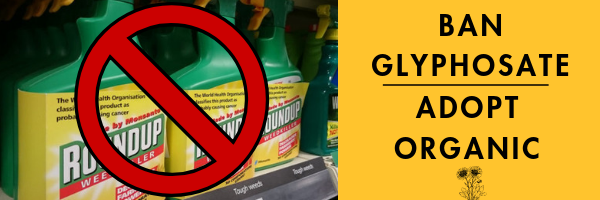
 (Beyond Pesticides, July 13, 2020) Soil is central to organic production. Therefore, hydroponic operations should not be considered eligible for organic certification, and the National Organic Program (NOP) must take a clear position in opposition to hydroponics and other non-soil-based methods in organic production, including containers. Organic farmers and consumers strongly agree that organic production must be soil-based.Â
(Beyond Pesticides, July 13, 2020) Soil is central to organic production. Therefore, hydroponic operations should not be considered eligible for organic certification, and the National Organic Program (NOP) must take a clear position in opposition to hydroponics and other non-soil-based methods in organic production, including containers. Organic farmers and consumers strongly agree that organic production must be soil-based. 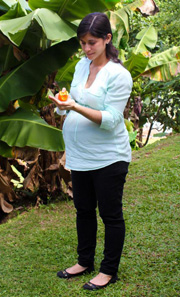 (Beyond Pesticides, July 10, 2020)Â
(Beyond Pesticides, July 10, 2020)Â 
 (Beyond Pesticides, July 8, 2020)Â Efforts to control the transmission of malaria are encountering a big, though predictable, problem: the mosquitoes that transmit malaria are developing
(Beyond Pesticides, July 8, 2020)Â Efforts to control the transmission of malaria are encountering a big, though predictable, problem: the mosquitoes that transmit malaria are developing 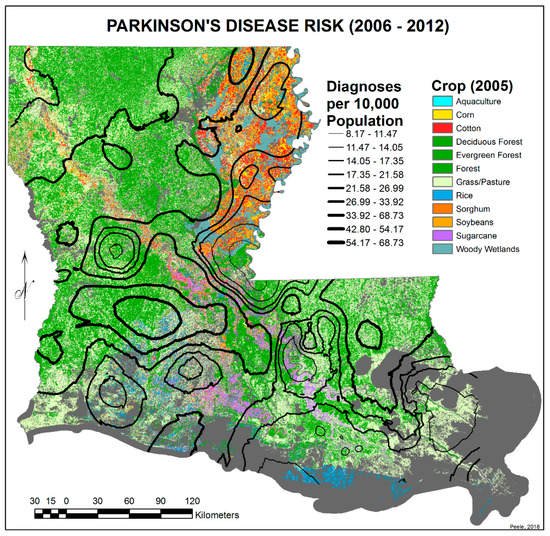 (Beyond Pesticides, July 7, 2020) Oneâs zip code plays an important role in the likelihood of developing
(Beyond Pesticides, July 7, 2020) Oneâs zip code plays an important role in the likelihood of developing 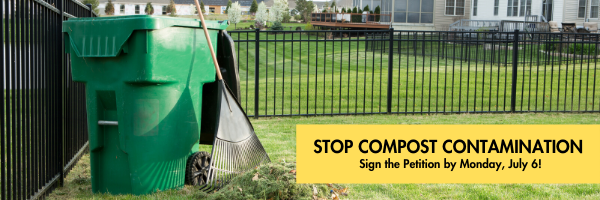 (Beyond Pesticides, July 6, 2020) EPA’s proposed interim decision (PID) on the weed killer clopyralid is inadequate to protect human health, property, nontarget plants, and pollinators from damage. Clopyralid poses unreasonable adverse effects that cannot be remedied by EPA’s proposed fixes. It should be banned.
(Beyond Pesticides, July 6, 2020) EPA’s proposed interim decision (PID) on the weed killer clopyralid is inadequate to protect human health, property, nontarget plants, and pollinators from damage. Clopyralid poses unreasonable adverse effects that cannot be remedied by EPA’s proposed fixes. It should be banned.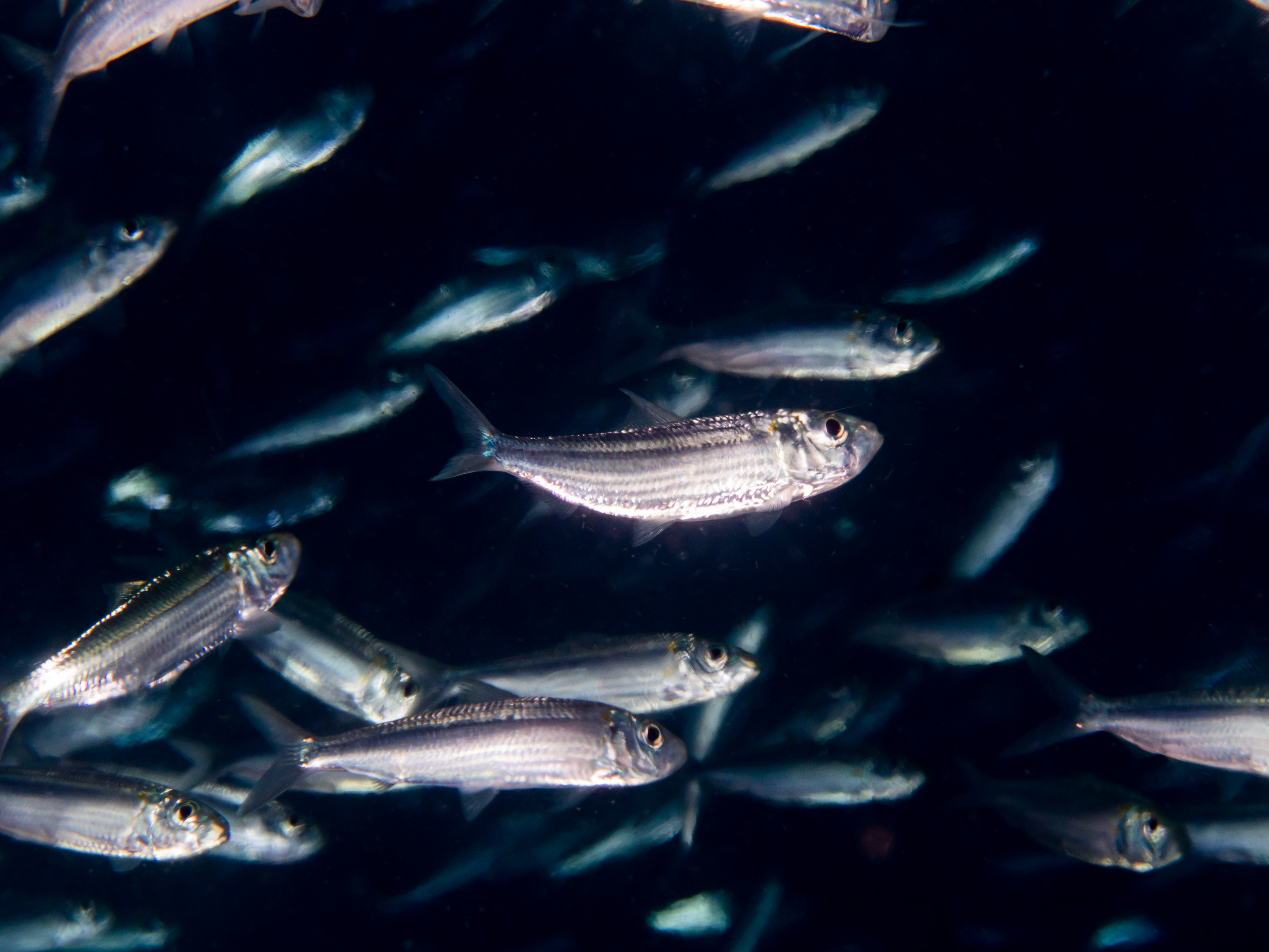
 (Beyond Pesticides, July 1, 2020) As the U.S. is subject to searing criticism for inadequately regulated hazardous pesticides domestically, administration officials are standing in the way as other countries’ work toward modest reforms. According to a
(Beyond Pesticides, July 1, 2020) As the U.S. is subject to searing criticism for inadequately regulated hazardous pesticides domestically, administration officials are standing in the way as other countries’ work toward modest reforms. According to a  (Beyond Pesticides, June 30, 2020) A review of scientific literature on the toxic effect of environmental contaminantsâincluding pesticidesâpublished in the journal Toxicological Science, âThe Impact of Environmental Chemicals on the Gut Microbiome,â associates these chemicals to changes in the gut microbiome and other adverse health implications. The review, by researchers at the University of Illinois, looks at how environmental contaminants adversely effects and reinforce chemical disruption of the gut microbiome. It highlights the importance of evaluating how environmental contaminants, like pesticides, impact body regulation by gut microbiota. The study has significant implications for considerations that should be, but are not currently, a part of pesticide review and registration by the U.S. Environmental Protection Agency (EPA).
(Beyond Pesticides, June 30, 2020) A review of scientific literature on the toxic effect of environmental contaminantsâincluding pesticidesâpublished in the journal Toxicological Science, âThe Impact of Environmental Chemicals on the Gut Microbiome,â associates these chemicals to changes in the gut microbiome and other adverse health implications. The review, by researchers at the University of Illinois, looks at how environmental contaminants adversely effects and reinforce chemical disruption of the gut microbiome. It highlights the importance of evaluating how environmental contaminants, like pesticides, impact body regulation by gut microbiota. The study has significant implications for considerations that should be, but are not currently, a part of pesticide review and registration by the U.S. Environmental Protection Agency (EPA). (Beyond Pesticides, June 29, 2020) Bayer’s Monsanto is requesting non-regulated status for corn that will increase the use of drift-prone and toxic herbicides. This means that the planting of a new genetically engineered (GE) variety of corn, which requires substantial weed killer use, will not be restricted in any way. The syndrome of ‘more-corn, more-pesticides, more-poisoning, more-contamination’ must stopâas we effect an urgent systemic transformation to productive and profitable organic production practices. Because USDA is proposing to allow a new herbicide-dependent crop under the Plant Protection Act, the agency must, but does not, consider the adverse impacts associated with the production practices on other plants and the effects on the soil in which they are grown. Business as usual is not an option for a livable future.
(Beyond Pesticides, June 29, 2020) Bayer’s Monsanto is requesting non-regulated status for corn that will increase the use of drift-prone and toxic herbicides. This means that the planting of a new genetically engineered (GE) variety of corn, which requires substantial weed killer use, will not be restricted in any way. The syndrome of ‘more-corn, more-pesticides, more-poisoning, more-contamination’ must stopâas we effect an urgent systemic transformation to productive and profitable organic production practices. Because USDA is proposing to allow a new herbicide-dependent crop under the Plant Protection Act, the agency must, but does not, consider the adverse impacts associated with the production practices on other plants and the effects on the soil in which they are grown. Business as usual is not an option for a livable future. (Beyond Pesticides, June 26, 2020) A court decision in California, challenging a cancer warning on products containing the weed killer glyphosate, highlights the distinct ways in which scientific findings are applied under regulatory standards, in toxic tort cases evaluated by juries, and by consumers in the marketplace. These differences came into focus as a U.S. court
(Beyond Pesticides, June 26, 2020) A court decision in California, challenging a cancer warning on products containing the weed killer glyphosate, highlights the distinct ways in which scientific findings are applied under regulatory standards, in toxic tort cases evaluated by juries, and by consumers in the marketplace. These differences came into focus as a U.S. court 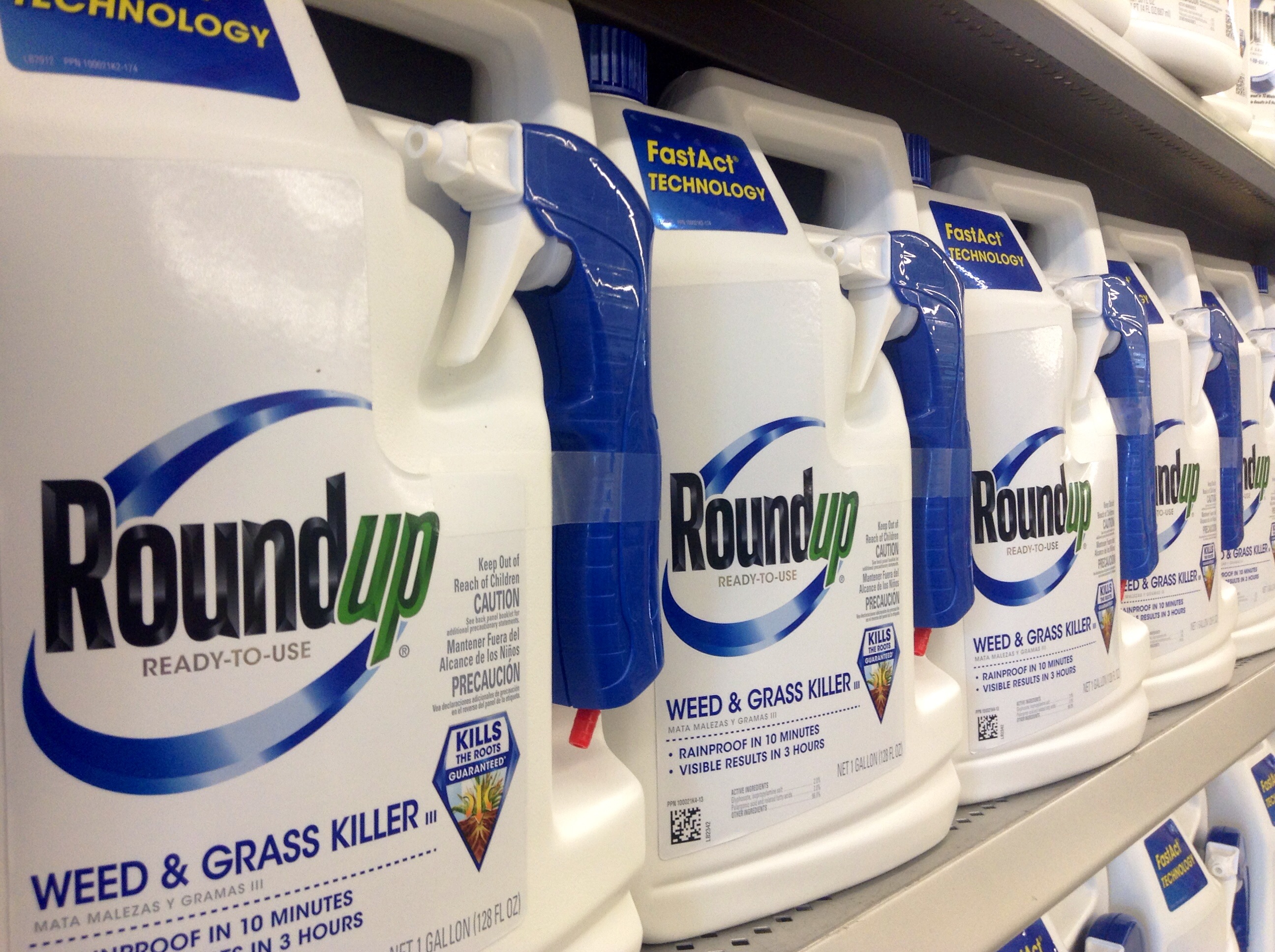 (Beyond Pesticides, June 25, 2020) Facing approximately 125,000 lawsuits on cancer caused by the weed killer Roundup™ (
(Beyond Pesticides, June 25, 2020) Facing approximately 125,000 lawsuits on cancer caused by the weed killer Roundup™ (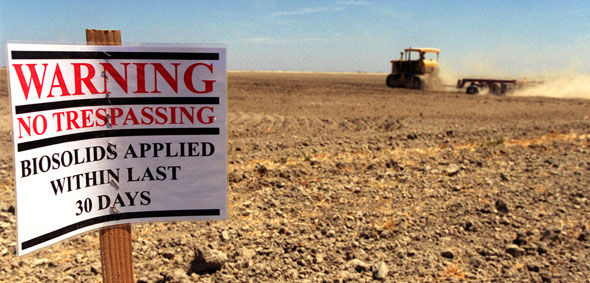 (Beyond Pesticides, June 24, 2020) Communities across the U.S. are restricting the use of biosolids (sewage sludge) in their jurisdictions, as researchers at Michigan Tech plan to study whether Covid-19 can persist in wastewater and sewage sludge. While relatively unknown to many city-dwellers, the use of recycled human waste on farm fields is a common practice in many rural communities throughout the country. Issues associated with smell, runoff, and contamination are often the impetus for local leaders to investigate and consider banning their spread, but the potential for the waste to vector coronavirus gives the issue a new sense of urgency. Â Â
(Beyond Pesticides, June 24, 2020) Communities across the U.S. are restricting the use of biosolids (sewage sludge) in their jurisdictions, as researchers at Michigan Tech plan to study whether Covid-19 can persist in wastewater and sewage sludge. While relatively unknown to many city-dwellers, the use of recycled human waste on farm fields is a common practice in many rural communities throughout the country. Issues associated with smell, runoff, and contamination are often the impetus for local leaders to investigate and consider banning their spread, but the potential for the waste to vector coronavirus gives the issue a new sense of urgency. Â Â 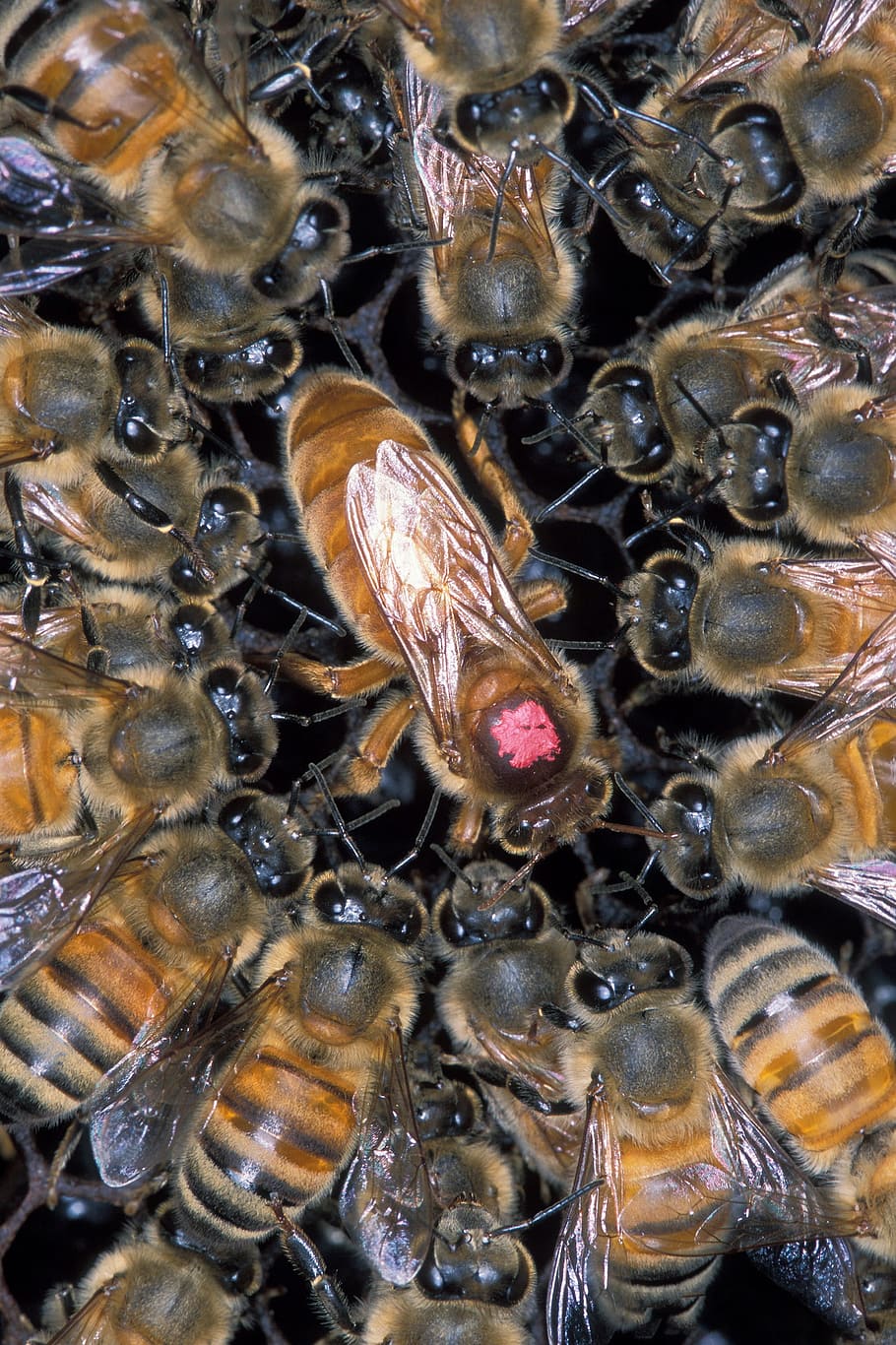 (Beyond Pesticides, June 23, 2020) Next-generation systemic insecticides, billed by the agrichemical industry as â
(Beyond Pesticides, June 23, 2020) Next-generation systemic insecticides, billed by the agrichemical industry as â
